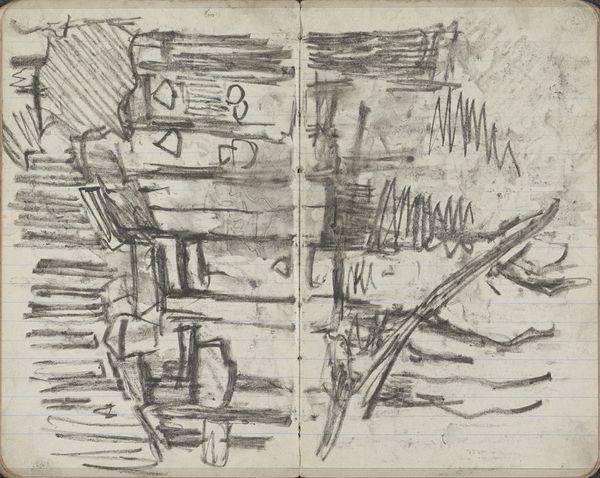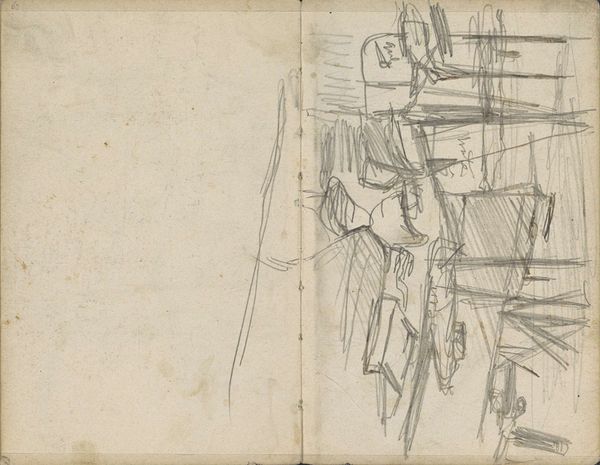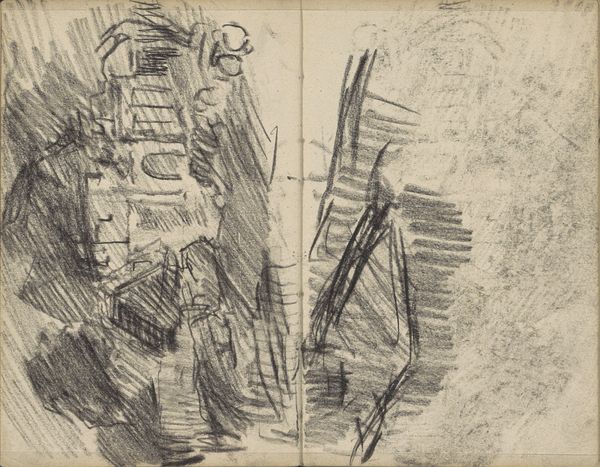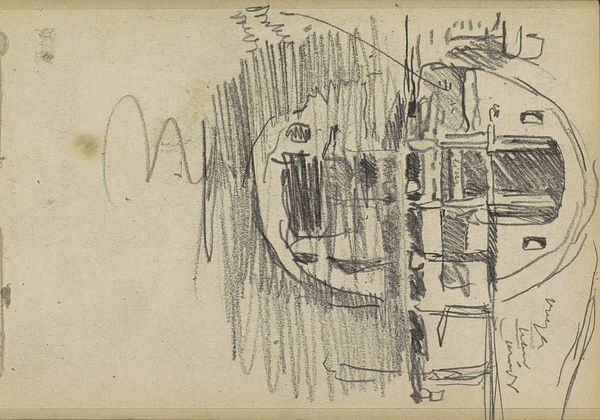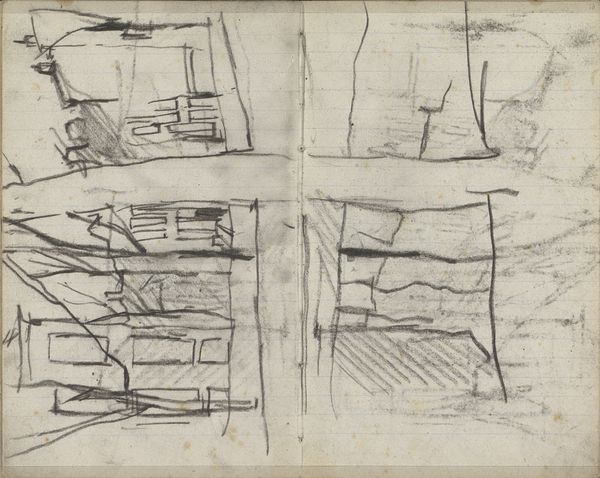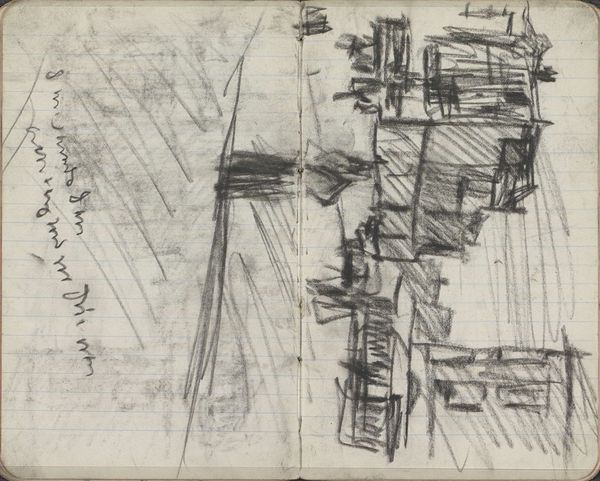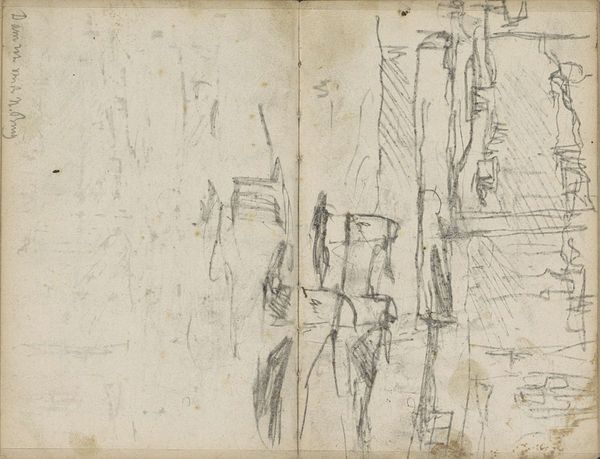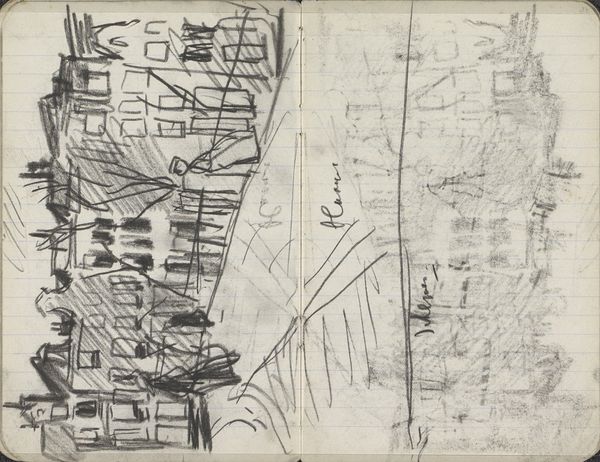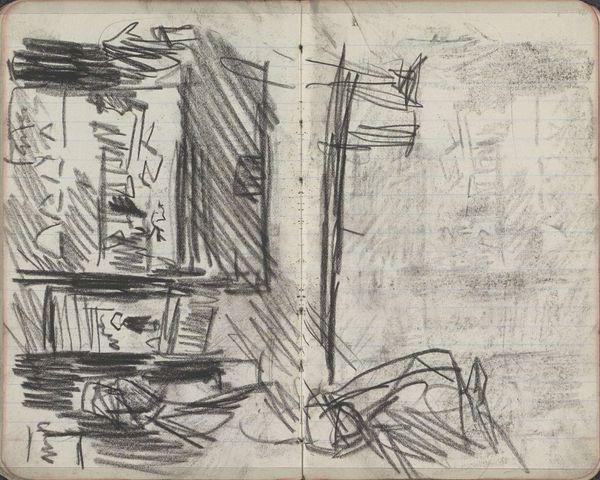
Gezicht op een brug in Amsterdam, mogelijk over de Prinsengracht 1895 - 1898
0:00
0:00
georgehendrikbreitner
Rijksmuseum
Copyright: Rijks Museum: Open Domain
Editor: We’re looking at "Gezicht op een brug in Amsterdam, mogelijk over de Prinsengracht" – that’s "View of a Bridge in Amsterdam, possibly over the Prinsengracht" – made between 1895 and 1898 by George Hendrik Breitner. It's a pencil and graphite drawing on toned paper. I'm struck by the loose, almost unfinished quality of the sketch, a fleeting glimpse. What are your initial thoughts? Curator: The material reality is precisely what's engaging here. It is on paper from a sketchbook – almost ephemera. Consider the rapid pencil strokes and their implications: Breitner isn’t aiming for timeless beauty but recording a specific, perhaps even banal, urban experience. How does the 'incomplete' nature change our reception of it? Is it ‘art’ or urban planning documentation? Editor: I see what you mean. It feels so immediate and raw, like a snapshot capturing the gritty atmosphere. What was it about Amsterdam's bridges that Breitner felt compelled to capture, or even mass produce as he seemed to do? Curator: Amsterdam, with its canals and bridges, was undergoing significant urban and industrial development at the time. Breitner, known for his depictions of working-class life and cityscapes, found in these structures the physical manifestation of the city’s transformation. These raw materials—the bridges themselves, the marks on the page—reflect labor and the changing social fabric. This is hardly ‘high art’; where is the aesthetic ideal? Editor: So it's almost like he's using the drawing to dissect the social and material landscape of the city itself? The raw lines of the sketchbook acting as a social tool to engage critically with modernity and progress. Curator: Exactly! And by presenting this work within the hallowed halls of a museum, aren't we also challenging conventional ideas about value and the means of artistic production? Are we aestheticizing labor and what does it mean in art and its relation to other forms of work? Editor: I never really considered the labor implicit in the act of drawing like this! That really opens up how I might see sketches, not just as artistic expression but as pieces of cultural and historical context. Curator: Indeed! Focusing on process, material, and social circumstances offers a fresh entry point into works otherwise framed in aesthetic or historical terms. It exposes the underlying processes by which they were born.
Comments
No comments
Be the first to comment and join the conversation on the ultimate creative platform.
